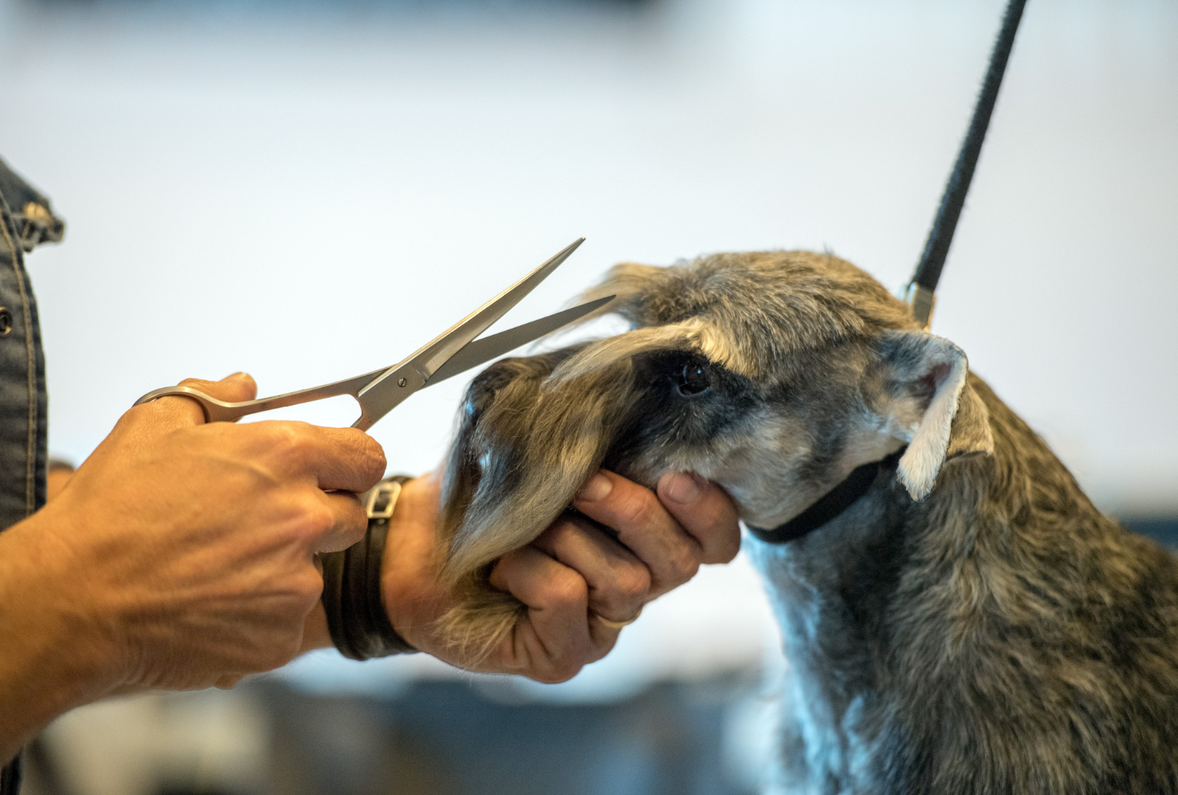Bichon Frise
The ancestor for the Bichon is the French breed known as the Barbet, or Water Spaniel. The name, “Barbichon,” probably came from the French name for beard, “barbiche,” and was later shortened to “Bichon.” Originally there were four recognized Bichons: the Bichon Maltais,(now, the Maltese), Bichon Bolognaise,(now, the Bolognese), Bichon Havanais,(now, the Havanese), and the Bichon Teneriffe, who later became known as the Bichon a Poil Frise, hence the current Bichon Frise of today.
Originating in the Mediterranean, these dogs traveled widely as they were often used for barter. Valued for their disposition and character, the Bichon was popular in Spanish courts in the sixteenth century, and they can be seen in the paintings of Goya of that period. In France, the breed was the favorite of King Henry III, where the breed was pampered, wearing ribbons and perfumes. Indeed, the French verb, bichonner, which translated means “to doll up” or “to pamper”, must have come directly from this tenderly cared for dog.
The breed went out of favor in the late 1800’s. Doing tricks in fairs and circuses, accompanying organ grinders or leading the blind, the Bichon became the “common dog”, running the streets. At the end of World War I, four fanciers in France recognized the potential of the breed and began a controlled breeding program.
In 1933, a controversy arose regarding the breed’s name. The term, “Bichon Frise” was chosen as “frise” refers to the dog’s soft, curly hair
The Bichon Frise was accepted for entry in the American Kennel Club Miscellaneous class in 1971, admitted to registration in the AKC Stud Book in 1972, and accepted to regular show classification in the AKC Non-Sporting Group in 1973.
The Bichon Frise is a white powder puff of a dog, with his plumed tail curved gently over the back and his dark eyes inquisitive and attentive. Underneath the profuse curly white coat, the Bichon has a surprisingly sound structure. Slightly longer than high, the weight usually falls between ten to eighteen pounds. The Bichon is a long-lived breed, often reaching the age of fifteen or sixteen. Bichons do well in apartment situations, but long walks are essential.
An extrovert by nature, the Bichon is playful and affectionate. Throughout history, this little dog has been a companion animal, and he thrives on being the center of attention. The Bichon is an intelligent breed that is easy to train and is capable in obedience, therapy work, and agility. The training works best when approached as a little game.
Bred to be hypoallergenic, this dog is an excellent choice for those with sensitivity. The undercoat of the Bichon is dense and soft, with a coarser, curlier outer coat. This combination gives a soft but substantial feel to the touch and, when patted, the coat springs back. Trimming is rounded to reveal the natural shape of the dog with the head, beard, ears, and tail left slightly longer. The overall impression is one of a rounded effect. Regular grooming and daily brushing are necessary for the upkeep of appearance. Ears and eyes require regular attention as well.
Skin allergies are common in Bichons, and knee problems (luxating patella) can occur as well. For this reason, it is important to keep the dog at a healthy weight as excess weight can exacerbate the problem.
I will include a quote from Tahaella Rasmusson, a teenage Bichon owner, which illustrates the love Bichon owners have for the breed, "My Bichon is very, very important and special to me. If you decide to buy a Bichon, train them when they're young. Bichons are great show dogs and very cuddly. Without my Sunshine, I'd be nowhere."
Cherrybrook.com is the place to find gifts, apparel, jewelry and décor for Bichon Frise lovers! Select Shop by Breed on the homepage or CLICK HERE.
Recent Posts
-
Spring Into Action: Fun Exercise Ideas for Your Canine Companion
Spring Into Action: Fun Exercise Ideas for Your Canine Companion As the winter chill melts away …Mar 26th 2024 -
Understanding Dog Grooming Shears: Cutting Through the Noise
Understanding Dog Grooming Shears: Cutting Through the NoiseDog grooming, or in particular trimming, …Feb 5th 2024 -
Choosing the Perfect Bed for Your Dog: A Guide to all Types of Dog Beds
Types of Dog Beds: Choosing the Perfect Bed for Your DogEvery dog owner knows that a comfortable pla …Jan 26th 2024




